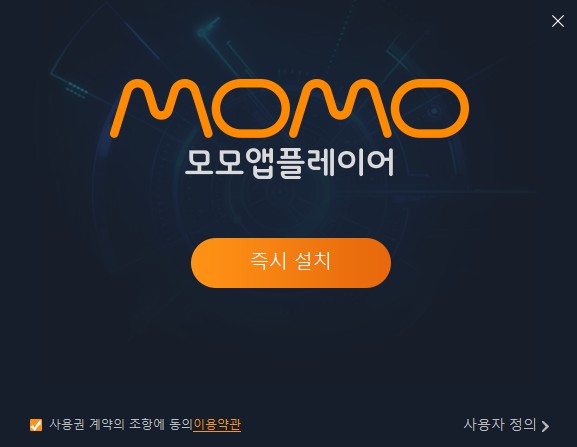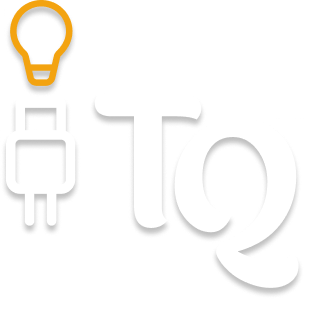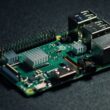Momo App Player is now branded as LDPlayer (Third-Party Confirmation). You can download LDPlayer on your Windows and Mac using our Download Guide. “It is also recommended to check the file using an anti-malware like BitDefender as users reported malware and non-useful registry dump while installing this emulator.”
There are also other websites and YouTube videos with link to the older versions of MoMo App Player and we only found them to be adware and one of them also reported to have Trojan.MulDrop19.3177 malware.
In this Guide,
- System Requirements for MoMo App Player
- How to Access and Understand MoMo App Player Settings
- Best CPU and RAM Settings for Low-End PCs
- Graphics and Resolution Tweaks
- Storage Optimization and App Management
- Keyboard & Mouse Control Settings for Gaming
- Power Saving Mode and Background Process Tweaks
- Frequently Asked Questions [FAQs]
- Wrapping up: The Best MoMo App Player Settings
If you’ve installed MoMo App Player on a low-end Windows PC and noticed some lag or stutter while gaming, you’re not alone. This emulator is lightweight and efficient, but without the right configuration, even the smoothest apps can start to feel sluggish. Whether you’re trying to run Free Fire, PUBG Mobile, or any other Android game on your PC, fine-tuning the MoMo App Player settings can make a huge difference in performance and stability.
This guide is built specifically for users who want to get the most out of MoMo without upgrading their hardware. We’ll walk you through the emulator’s internal settings, what they mean, and how to adjust them step-by-step for low-spec systems. From CPU allocation and RAM optimization to display tweaks and power-saving tips, everything in this guide is tailored to give you a smoother, lag-free experience.
Before we dive into adjustments, let’s quickly look at the system requirements to ensure your PC is ready to handle the emulator with basic efficiency.
Also Read: How to Download & Install Momo Emulator on Windows
System Requirements for MoMo App Player

Before adjusting any emulator configurations, it’s important to know what your PC can realistically handle. MoMo App Player is designed to run on a wide range of systems, but optimizing it for low-end setups starts with understanding the minimum system requirements and where your PC stands.
Minimum Requirements (Basic Operation)
- OS: Windows 7, 8, 10 (64-bit preferred)
- CPU: Dual-core Intel or AMD processor
- RAM: 2 GB
- Storage: At least 2 GB free disk space
- Graphics: Integrated GPU like Intel HD Graphics 4000 or better
- Virtualization (VT-x): Must be enabled in BIOS
These specs will allow you to run MoMo App Player, but the experience may feel limited, especially with graphically demanding apps.
Recommended for Smooth Gameplay
- CPU: Intel Core i3/i5 or AMD Ryzen 3+
- RAM: 4 GB or more
- Storage: SSD preferred for faster loading
- Graphics: Dedicated GPU (even an older NVIDIA GT 710 helps)
- Screen Resolution: 1280×720 or lower for better emulator scaling
If your PC meets the minimum but not the recommended specs, don’t worry. The right MoMo App Player settings can still dramatically improve your experience, and that’s exactly what the rest of this guide is about.
Also Read: The Best GBA Emulators for iPhone and iPad
How to Access and Understand MoMo App Player Settings
If you’re aiming to get better performance on a low-end PC, the first step is knowing where to find and adjust the MoMo App Player settings. Everything from CPU usage to screen resolution lives inside one clean interface, and it’s easier to navigate than it might seem.
To access the settings:
- Open MoMo App Player. Once the emulator launches, look at the top-right corner of the window.
- Click the gear icon. This opens the settings menu, where you’ll see tabs like Performance, Display, Engine, Advanced, and more.
- Switch to English. If your interface appears in Korean or another language, scroll to the last tab with the dropdown menu, choose “English,” then restart the emulator to apply the changes.
Best CPU and RAM Settings for Low-End PCs
On a low-end PC, every bit of processing power counts. Allocating the right amount of CPU and RAM to MoMo App Player can mean the difference between a smooth session and a lag-filled mess. The goal isn’t to push your PC to its limit; it’s to strike a balance that leaves enough system resources for both the emulator and Windows itself.
Recommended CPU Settings
- 1 core for ultra-low-end PCs (2GB RAM or less):
- This keeps MoMo light, but animations may feel choppy.
- 2 cores for most low-end PCs (3–4GB RAM):
- This is the sweet spot. It enables multitasking within the emulator without overwhelming your system.
Avoid assigning all your cores to the emulator. Doing so may cause your system to freeze, especially if you’re running background tasks like browsers or antivirus.
Recommended RAM Allocation
- 1 GB for basic app usage (WhatsApp, browsers, utility apps)
- 1.5 to 2 GB for light gaming (Free Fire, Clash of Clans)
- Do not assign more than 50% of your total system RAM
For example, if your system has 4 GB total, assigning 2 GB to MoMo is safe. If you only have 2 GB total, stick to 1 GB or less.
Once you’ve set your CPU and RAM allocation in the Performance tab of the MoMo App Player settings, be sure to restart the emulator to apply the changes. With the right configuration, you’ll notice faster loading times and fewer frame drops, even on older machines.
Also Read: 15 Best NDS Emulators for Windows | Play Pokemon, Mario & More
Graphics and Resolution Tweaks
Graphics settings are one of the biggest reasons your emulator feels slow, especially if you’re pushing your PC to display full HD visuals it can’t handle. Adjusting graphics and resolution is one of the easiest ways to reduce lag and boost FPS without changing hardware.
Best Resolution for Low-End PCs
- Set resolution to 1280×720 (HD)
- This strikes a good balance between visual clarity and speed.
- Avoid Full HD (1920×1080) unless you have a dedicated GPU.
- DPI: Keep it at 160 or 240
- Lower DPI makes the emulator smoother; higher DPI improves visuals but adds load.
Stick with landscape mode unless your app needs portrait. Rotating screens adds unnecessary rendering overhead for some PCs.
Rendering Mode: OpenGL vs DirectX
In the Engine section of the MoMo App Player settings, you’ll find rendering options. Here’s how to decide:
| Option | When to Use |
|---|---|
| OpenGL | Better for Intel-integrated graphics, smoother on older PCs |
| DirectX | Good for NVIDIA/AMD graphics, or if OpenGL crashes |
You may need to try both and restart the emulator to see which works better.
FPS (Frame Rate) Settings
- 30 FPS is fine for most games and maximizes stability.
- 60 FPS looks smoother, but can cause lag without proper CPU/GPU power.
- Use the “Enable High FPS” toggle only if you know your system can handle it.
Once these are applied, reboot the emulator. The visual performance should feel cleaner, especially in games or apps with lots of animation.
Also Read: Logitech POP Mouse Review: Cute, Clicky & Smart
Storage Optimization and App Management
Low-end PCs often struggle when disk space is tight or when too many background apps are running inside the emulator. Cleaning up storage and managing your installed apps is one of the simplest ways to keep MoMo responsive and stable.
Change App Installation Path
By default, MoMo stores apps and data in your system drive (usually C:), which can slow things down. If your C: drive is nearly full:
- Go to the Advanced tab in the MoMo App Player settings.
- Look for App install path or Storage location.
- Change it to another drive (like D: or E:) with more free space.
- Restart MoMo for the new path to take effect.
This shift can free up critical space and speed up both Windows and the emulator.
Clear Cache and Temporary Files
Every app you run inside MoMo generates cache. Over time, these add up.
- Open the Android Settings inside the emulator.
- Go to Storage → Cached Data, and tap Clear Cache.
- You can also use a lightweight cleaner app like CCleaner (available on the Play Store).
Uninstall Unused Apps
The more apps installed, the slower your virtual disk gets. To clean house:
- Long-press any unused app inside the home screen.
- Tap Uninstall.
- You can also manage apps from Settings → Apps.
If you’re familiar with VirtualBox tech, you can compact the virtual disk manually from the backend. But for most users, simply clearing cache and unused apps will be more than enough to keep storage lean.
Also Read: Logitech POP Keys Review | Typing, But Make it Stylish
Keyboard & Mouse Control Settings for Gaming
If you play games like Free Fire, PUBG Mobile, or Call of Duty using MoMo App Player, your performance doesn’t just depend on graphics; it also relies on control precision. Setting up your keyboard and mouse properly can give you faster reaction times and a smoother experience overall.
How to Set Up Key Mapping
- Launch the game inside MoMo.
- Click the keyboard icon (usually floating on the right edge of the emulator screen).
- This opens the Control Editor, where you can drag and drop key inputs over virtual buttons.
- Move = W/A/S/D
- Fire = Left Mouse Button
- Scope = Right Mouse Button
- Jump = Spacebar
- Reload = R
You can customize each input based on your comfort or copy settings from other games.
Improve Control Responsiveness
- Use a lower mouse DPI if you’re getting erratic movement.
- Increase sensitivity in-game, but lower it in the emulator settings to balance control.
- Disable Windows mouse acceleration (Control Panel → Mouse → Pointer Options).
Save and Export Control Layouts
- After mapping keys, click Save.
- You can also export control profiles and import them later. This is handy if you reinstall MoMo or use it on a second PC.
The MoMo App Player settings also offer a “Restore Default” option if your custom mappings ever feel off or buggy.
Also Read: Satechi 30W USB-C Charger Review | Worth the Upgrade?
Power Saving Mode and Background Process Tweaks
Even if you’ve optimized CPU, RAM, and graphics, background processes can silently eat up performance on a low-end PC. That’s why the final touch to a smoother experience lies in power-saving adjustments, both inside MoMo and in Windows itself.
Enable Power-Saving Mode
MoMo App Player includes a built-in Power Saving Mode that limits background sync, lowers rendering strain, and caps frame rates when apps are idle.
To enable:
- Open MoMo App Player settings
- Go to the Engine or Performance tab
- Enable the Power Saving option (if available)
- Restart MoMo for changes to apply
This is especially useful if you leave the emulator running for long periods or multitask often.
Inside the Android layer of MoMo:
- Go to Settings → Accounts
- Turn off auto-sync for unused accounts
- Disable Play Store auto-updates to save system resources
Disable Windows Background Apps
While using MoMo, Windows itself might slow things down. Do this:
- Press Ctrl + Shift + Esc to open Task Manager
- End tasks like browser tabs, auto-updaters, and unused software
- Disable startup apps you don’t need (Windows → Startup tab)
Also Read: Pitaka Aramid Fibre MagSafe Power Bank Review
Frequently Asked Questions [FAQs]
Set CPU to 1 core and RAM to 1024MB. Use 1280×720 resolution with OpenGL and cap FPS at 30.
Background apps in Windows or a lack of virtualization (VT-x) are often the culprits. Check both before assuming it’s the emulator.
Yes, go to the last tab in the settings menu, select English, and restart the emulator.
It depends on your hardware. Integrated GPUs prefer OpenGL; dedicated GPUs often perform better with DirectX.
Between 1.5 GB and 2 GB is ideal. Avoid assigning more than 50% of your system RAM.
Absolutely. Lower resolutions like 1280×720 reduce load on your GPU and improve frame rates.
Yes, MoMo allows you to export control profiles so you can reuse them after reinstalling.
Use MoMo Lite only if the standard version still lags after full optimization.
Before You Leave
Get Our Prime Content Delivered to your Inbox for Free!! Join the Ever-Growing Community… Right Now.
Give this article a quick share,
Wrapping up: The Best MoMo App Player Settings
Getting the most out of MoMo App Player on a low-end PC isn’t about pushing your hardware; it’s about working with what you’ve got. With the right CPU and RAM settings, a reduced resolution, and smarter background management, even a modest setup can run mobile games smoothly.
We walked through every core adjustment inside the MoMo App Player settings, from performance tweaks to visual tuning and control configuration. The goal wasn’t just speed; it was consistency and playability.
If you’re just starting out, try the basics: lower the resolution, limit FPS, and allocate modest RAM. Already done that? Explore our other MoMo guides, like how to install APKs or switch languages, to build your setup even further.
The emulator’s flexibility is its strength. And with this guide, you’ve already taken the biggest step: making MoMo work for your system, not the other way around.
If you like what you read, give us a quick share on your social media platform and give us all the love and support. You can also connect with us on our Telegram Channel, Facebook Page, Reddit Community, and X to never miss out on tech updates.







